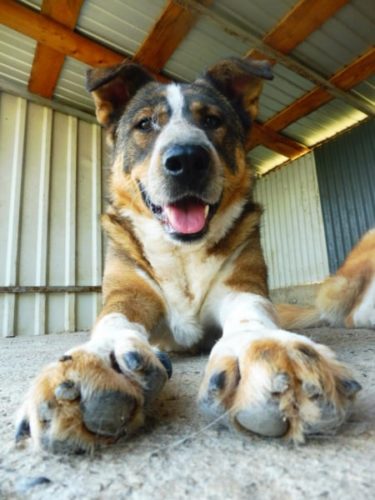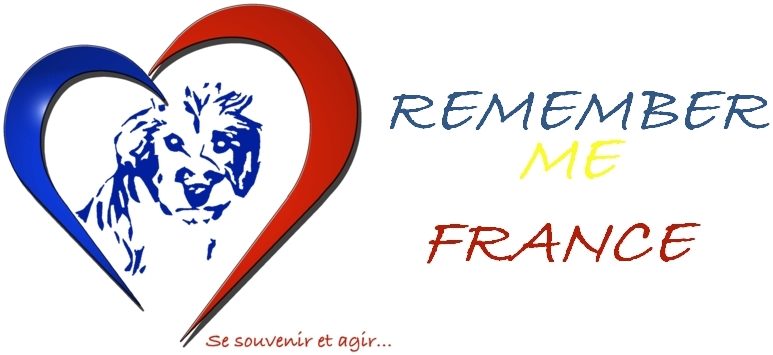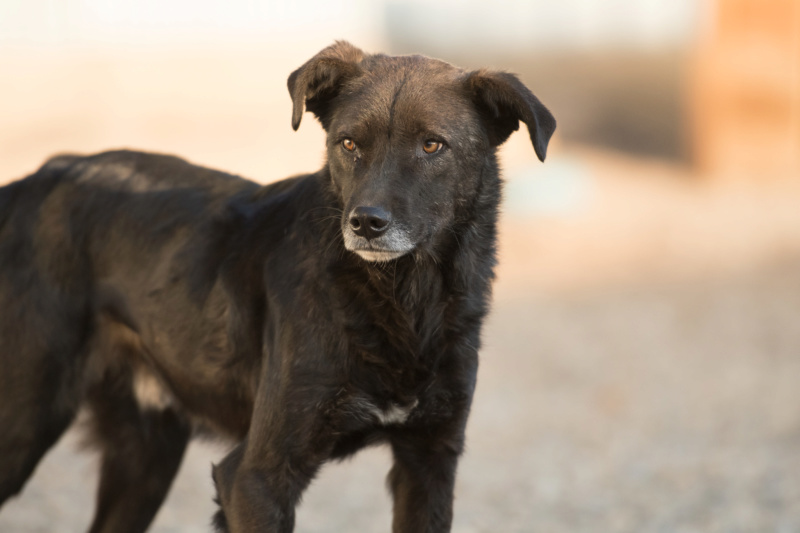
FAQ
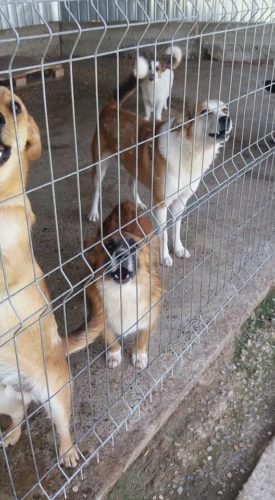
Les chiens de Roumanie et l’association Remember Me
Personnel fees (including for transport and rehoming) : € 4135
Anti-parasite medications: € 1156
Maintenance fees for the shelter: € 1027
Veterinary fees for the dogs at foster homes in France: € 1211
Veterinary fees in Romania: € 2422
Pension fees at the clinic in Bucharest: € 375
ICAD*: € 720
Purchase of kibbles for the shelter: € 500
DSV control fees (Veterinary services Romania): € 209
Leasing of a van: € 480
Rehoming fees: fuel, toll roads, etc. € 3727
Postal and telephone expenses: € 18
TOTAL: € 15980
* National identification register of domestic carnivores in France
- medical and veterinary supplies: inox boxes, pads, sterile towels, gloves, desinfectant, anti-parasite, deworming, other medicines for animals...
- transport crates and cages, all types, and kennels
- cushions, dog beds, pillows, plastic baskets
- bowls, specifically inox bowls and the "wheel" type ones for puppies
- puppy pads
- harnesses, collars, leashes
- food: kibbles and canned food for dogs, puppies or cats
- professional disinfectant products like saniterpen
You can bring your donations to us at different collection points in Livry Gargan, Orbey and Robion, or any of the stops that our van passes by during rehoming trips . Do not hesitate to contact us to give us a heads up. Thanks so much!
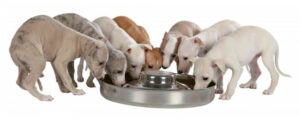
Bringing them home
- a harness in the size of the dog (to the extent possible)
- a collar with a medal with your phone number engraved on it
- two leashes
a travel crate
It is critical that your dog will wear both a harness and a collar. If one the two does not properly fit the animal and he manages to take it off, then you have an another option to keep him secured. That's why it is important to attach one leash to the harness, and another to the collar. We ask that the collar has a medal with your phone number engraved on it. In case the dog escaped, this will help you to find your dog back as quickly as possible. We have a partnership with le Coin des Animaux for that: For every purchased medal, 1 euro is transferred to our association.
The harness you choose should not be a Julius, Animalin or similar one. These models are not secure, and a dog can easily escape from it when he is panicking. For safety purposes, retractable leashes are also not recommended.
Finally, the transport crate is mandatory because it guarantees a safe trip home for everyone. Whether the dog is timid, fearful or friendly, don't forget that you do not know him yet, and he doesn't know you yet either. Nobody can foresee his reaction towards you or in a car. We therefore ask that you keep the dog in his transport crate until you arrive home, and do not let him out at any point during the trip. When a dog is particularly scared or terrified, we will transfer the dog directly from his cage in the van to your transport crate. Crates made of textile are not accepted, as a dog can easily rip it and get out of it when he is panicking.
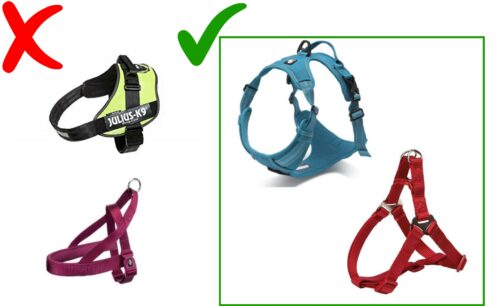 'X' and 'Y' shaped harnesses are recommended by animal osteopaths because they have the advantage of redistributing the pressure across the thorax. While a harness with a horizontal strap compresses the trachea and blocks the shoulders.
'X' and 'Y' shaped harnesses are recommended by animal osteopaths because they have the advantage of redistributing the pressure across the thorax. While a harness with a horizontal strap compresses the trachea and blocks the shoulders.Used on a daily basis, these harnesses can cause problems with the front locomotor, muscle pain or even early arthrosis. (Sources : Loreline Thooris on toutoupourlechien.com and Charlotte Bouchoux)
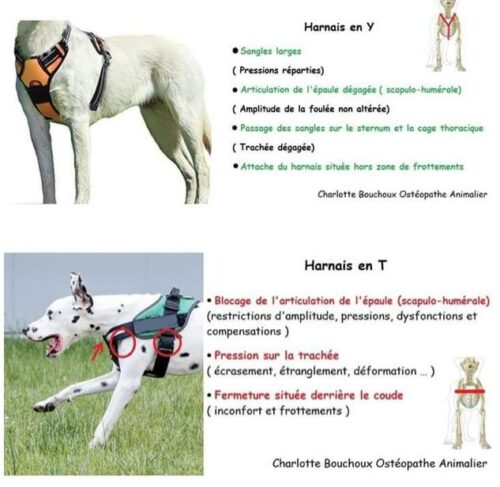
Nous vous demandons donc de laisser de l'espace aux vétérinaires et aux membres de l'équipe Remember Me, qui sortent les animaux du camion, prodiguent des conseils à chaque adoptant, etc.
Nous ne fournissons aucun harnais, collier, laisse ou caisse de transport sur place ; vous devez venir équipés d'accessoires adaptés à votre nouveau compagnon. Certains sont obligatoires, la liste complète figure juste au-dessus.
During your trip home, nothing is safer than a transport cage, for your animal's safety as well as your own. This way, he will be protected and kept safe in case you have to brake abruptly. In addition, a scared dog that has a tendency to escape could disturb the driver and even provoke an accident.
Once you've arrived at home, leave him be, don't force him, even if he anxiously stays in the back of his cage: let him observe you. Patience and kindness are the key to a successful adaptation.
Vous ne devez en aucun cas lâcher votre chien sans laisse pendant les premiers jours qui suivent son arrivée chez vous, même dans votre jardin. Les roumains peuvent se révéler surprenants quand il s’agit de trouver une faille dans le grillage ou sauter 2 mètres de haut. N’oubliez pas qu’un temps d’adaptation plus ou moins long (plusieurs semaines/mois) est nécessaire avant de pouvoir affirmer que vous connaissez votre chien. L'animal a aussi besoin d’apprendre à vous connaître pour s’attacher à sa nouvelle famille et revenir naturellement vers vous.
Une fois votre chien en confiance, vous pourrez remplacer la laisse par une longe, sorte de longue laisse que vous pouvez tenir ou laisser traîner à terre. Laissez lui toujours une médaille avec vos coordonnées ; vous pouvez également l’équiper d’un petit boîtier GPS (type Weenect ou Tractive).
Nous déplorons encore beaucoup trop de fugues, à l’issue parfois dramatique, c’est pourquoi nous insistons tant sur ces points. Même si votre chien se sent vite à l’aise avec vous, même si vous le sentez rassuré, ne brûlez pas les étapes ! Un chien peut vite paniquer, surtout dans la rue où certains ont connu des expériences traumatisantes.
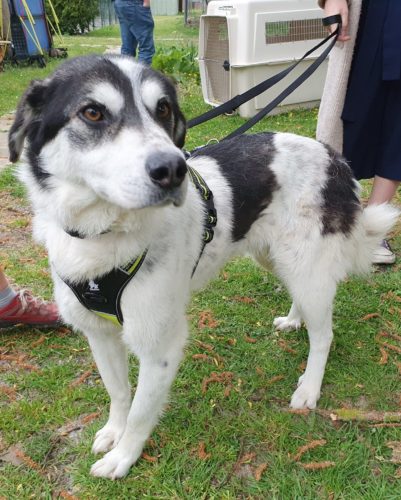
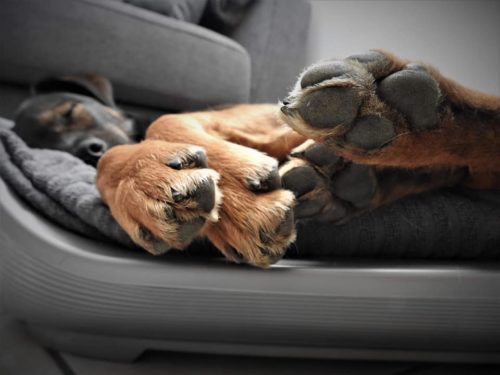
L’arrivée du chien
Keep in mind that he has no idea where he is, nor who your are, and that he has completely lost any point of reference. Until now, he has known nothing but life roaming on the streets, hunger, violence, and probably does not even know what a cuddle is...
First of all, let him recover. Place him directly in the part of the house where you have installed his bed, his transport cage, his bowls, etc. Ensure that your kids or other pets do not bother him during his first days: your dog is exhausted, and he will surely be on the defensive.
Organize a meeting between your new arrival and your other animals once he is recovered, on a neutral and closed terrain; with your last arrival kept on a (long) leash.
Some dogs immediately feel right at home, while others need several weeks to observe you, while hiding in a corner. Do not force contact, let him progress at his own pace.
Your dog will not be familiar with the principle of walking on a leash. You will need to arm yourself with patience and kindness to make him understand that this is not a restriction. Using a harness is preferred for two reasons: it is much more secure (Romanian dogs are very resourceful and will have no problem getting rid of their collar when they feel threatened!) and less violent for your companion. Do not take your dog for walks outside until he accepts his harness.
During the first months, do not leave your animals unattended. Make sure they have properly gotten used to each other to ensure harmonious cohabiting. If you have a garden, always keep an eye on him while he is out there, and regularly verify that your fencing isn't damaged and does not have any holes.
Finally, use a long leash for your walks during the first month. As long as the recall and natural following have not yet been acquired, never leave your dog off leash. This is very important when adopting a Romanian dog that does know our rules and environment, and can get scared in any kind of situation... Get him a name tag with your contact details engraved, so that in case he does manage to escape, you can be reached as soon as possible.
You could choose to sleep in the same room as he during the first few days. When he is crying or panicking, just speak softly to him or pet him in order to calm him down. At the beginning, you will have trouble trying to understand the reason for his whining: does he need to go out? Is he stressed in his new environment? Does he need to be close to me? Don't forget that he will need several weeks to get used to his new home. Once he feels more confident, you can let him sleep in the room that you want him to sleep in, which could be your bedroom or not.
Training
The advantage of having a garden is that you only have to take him on one big walk per day, while in an apartment, you will have to take him for several 'pee breaks'. The number of pee breaks will depend on each dog and his capacity to hold it. In general, you should count on at least two or three (morning, afternoon, evening) per day.
Next, regularly leave the house during the day while leaving your dog alone for 30 seconds, then 1 minute, 3 minutes, 10 minutes, 20 minutes... By making your absence something trivial, you will be able to integrate this habit more rapidly as a part of his life. Do not go back inside while your dog is barking or whining. Wait for a few seconds of silence (or a short interruption in between the barking in case of louder dogs) before joining him back inside, so that he does not start to associate your return with his calls. Do not rush the different steps: if your dog has trouble being alone for just 5 minutes, stick to this level until he has perfectly mastered this.
For dogs that particularly anxious when they are alone, buy a toy that keeps him busy or a bone/horn/ears for him to chew on. Not only does this stimulate him, his attention will also be more focused on something else than your absence. Avoid making a big deal out of you departing and coming home, so that your companion does not get overly excited. Leave your home calmly, and stay calm when you come home as well.
When you come back home and realize that he has destroyed or damaged something, do not lecture him and hide your discontent. Your dog has no way of associating your anger with something he has done several minutes or hours ago... You will just cause him to be even more anxious when you leave in the future, and will see you coming home as a source of hostility towards him.
Finally, keep in mind that depending on each individual, learning to be alone can take a while. A dog is a social animal; being alone without anything to do for several hours is not something pleasant or natural for him. But with time and some work, it is completely feasible to get there!
An adult dog may have lost the notion of being clean while having stayed at the shelter, as he does not have the possibility of doing his business outside of his enclosure...
To make your companion understand the principle of being clean, let him go outside a bit after meals (in those cases, keep him in a short leash to avoid the risks of stomach twisting), when you wake up and before you go to bed to take him to do his business. When your dog defecates where you want him to, be sure to congratulate him.
When on your arrival back home you realize that your dog has not managed to hold it in, do not punish him. He has no way to linking your fury with these events that took place several minutes or hours earlier... When you catch him in the middle of the act, you can tell him a firm 'No' and immediately take him to the place where you want him defecate instead. If he finishes there, make sure you congratulate him.
Over time, introduce pee breaks at fixed times so that your companion learns the habit of holding it up until these different time slots. You will equally start to recognize his own signals he gives of when he really needs to go: whining, scratching the door,...
At the beginning, you will have to take additional precautions. For example, make sure that your child does not play too loudly or roughly next to the animal so that he does not scare him. On the other hand, do not hesitate to involve your child in the dog's walks.
We repeat this over and over: never leave your child alone with a dog. Even when super well-integrated in the family, an animal can always respond in an unexpected manner when a child shows unexpected behavior.
